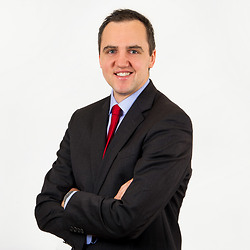Not Playing Games: Trademark Dispute Between Gaming Equipment Rivals Reaches Federal Appeals Court
Video gaming is an enormous industry, currently bigger than the movie and music industries combined, and only continues to grow. Two billion people—a quarter of the world’s population—play video games. Gaming generated $155 billion in revenue in 2020, and some project that its 2025 revenue will exceed $250 billion. At the same time, elite, competitive gaming known as “esports” is experiencing exponential growth in viewers and revenues.
Unsurprisingly, there is fierce competition between companies offering goods and services to gamers. And, as in any significant industry, the companies invest heavily in building and protecting their brands, including through trademark protections.
A hard-fought battle over trademark rights for video gaming equipment is currently in the U.S. Court of Appeals for the Fourth Circuit in the case of Wudi Industrial (Shanghai) Co., Ltd. v. Wong (Case No. 22-1662). The case illustrates several important legal and strategic issues to consider in addressing trademark disputes.
Background
The parties, one based in China and the other based in the United Kingdom, both make specialized chairs and other furniture for video gaming. Esports players and many at-home gamers use gaming chairs, which can retail for hundreds or even thousands of dollars.
A trademark is a method of identifying—usually through words, phrases, or designs—the source or origin of a product or service.
Trademarks can be registered at the state, federal, or international level. Without registration, trademarks in the United States acquire common law protection through their use in commerce. In trademark disputes in the United States, the senior user of a trademark typically has superior rights, with certain exceptions, regardless of if or when the trademarks were registered.
Still, a trademark registration provides a host of benefits, especially a federal registration with the U.S. Patent and Trademark Office (“USPTO”). The benefits of a federal registration include:
- Putting others on notice and deterring the adoption of similar marks. This is helpful as a practical matter. It also helps the holder of the registration succeed in obtaining remedies against an infringer in litigation.
- Providing nationwide protection. This is a significant benefit over common law protection, which generally protects the trademark only in the specific geographic regions in which it is being used.
- Allowing registration with U.S. Customs and Border Protection. This can help prevent the importation of infringing or counterfeit goods.
Another major benefit of federal registration is a presumption that the trademark is valid. In the five years following the registration, others can challenge the validity of the trademark, but the presumption of validity remains potent. After five years, the registration becomes incontestable, which means that, subject to certain exceptions, it provides conclusive evidence of validity.
As one method of challenge, a person can seek to cancel another’s trademark registration on certain grounds, including on the basis that the registered trademark is likely to cause confusion with the challenger’s trademark. The challenger’s trademark need not be registered. These cancellation proceedings can be brought in various places. They can be brought in the Trademark Trial and Appeal Board (“TTAB”), an adjudicatory body within the USPTO that functions somewhat like a court. Or they can be brought in a federal court, either in the first instance or to appeal a TTAB decision.
Parties sometimes resolve disputes concerning trademark validity by entering into settlement and coexistence agreements. These allow the parties to agree that their trademarks can coexist in the market by agreeing to the specific trademarks that will be used, the segments of the market in which they will be used, the locations in which they will be sold, or a wide range of other terms.
The Gaming Companies' Dispute
The plaintiff, “GT Racing,” obtained a federal trademark registration for the stylized GTRACING name:
![]()
The defendant, “GT Omega,” sought to cancel GT Racing’s federal trademark registration by filing a cancellation petition in the TTAB. GT Omega argued that the trademark was likely to cause confusion with GT Omega’s use of the names GT OMEGA and GT OMEGA RACING, as well as its logo:

The TTAB agreed and ruled that the trademark should be cancelled. The TTAB found that GT Racing’s priority date—the date it first used its trademark in interstate commerce—was May 1, 2016. GT Omega’s priority dates, both for GT OMEGA and for GT OMEGA RACING, predated 2016.
Accordingly, the TTAB needed to consider whether there was a likelihood of confusion between the two companies’ marks. The TTAB found that there was indeed a likelihood of confusion based on the following findings:
- The trademarks were being used on very similar goods and would likely be marketed and sold to the same consumers.
- Some customers had already shown confusion between the two companies’ goods.
- The companies’ trademarks are similar in the way they look and sound, and in the impression they make on customers. The TTAB noted that GT Omega’s use of the term “Omega” did not help to distinguish the companies’ trademarks. Other aspects of the marks were similar and the term “Omega” means “the last in a series,” which could lead customers to believe GT OMEGA meant the last in GT Racing’s series of chairs. So, even with the word “Omega,” consumers would likely sense a connection between the two trademarks.
GT Racing appealed the TTAB’s cancellation decision to a federal district court in Virginia. GT Racing submitted new evidence and asked the district court to consider the cancellation issue afresh.
The Parties Settle, But This Generates Further Litigation
While the district court litigation was pending, the parties entered into a settlement concurrent-use agreement. That is a species of coexistence agreement, allowing each party to use their trademarks but setting limits on each party’s use of the trademarks—on social media, specifically—to mitigate confusion. As a result, the litigation was dismissed.
Just seven months later, however, GT Omega went back to the court to enforce the settlement agreement. GT Omega alleged that GT Racing’s social media activity, and third-parties’ social media activity involving GT Racing, was inconsistent with the agreement. The district court agreed, finding GT Racing in breach, ordering GT Racing to comply with the settlement in certain specified ways, and awarding GT Omega its attorneys’ fees and costs for enforcing the agreement.
GT Racing is currently appealing the district court’s ruling on a number of grounds. Among other things, GT Racing argues that the district court interpreted the restrictions in the settlement incorrectly and that GT Omega itself had breached the settlement agreement. The appeal on those issues continues.
Takeaways from the Wudi Industrial Dispute
The Wudi Industrial case—in all its stages, from the TTAB to the district court and the Fourth Circuit—illustrates many of the complex and nuanced issues that will arise in trademark disputes. The most recent chapter in the litigation shows that even when parties reach an agreement on co-existence, disagreements can persist. Unsurprisingly, social media is often a key battleground and a coexistence agreement should ideally avoid any ambiguities about the conditions for a party’s use of a trademark on social media.
This article was first published on LAW.COM on September 12, 2022, and is republished here with permission. ©2022 ALM Media Properties, LLC. All rights reserved.
Professionals
- Attorney
- Attorney
- Attorney





